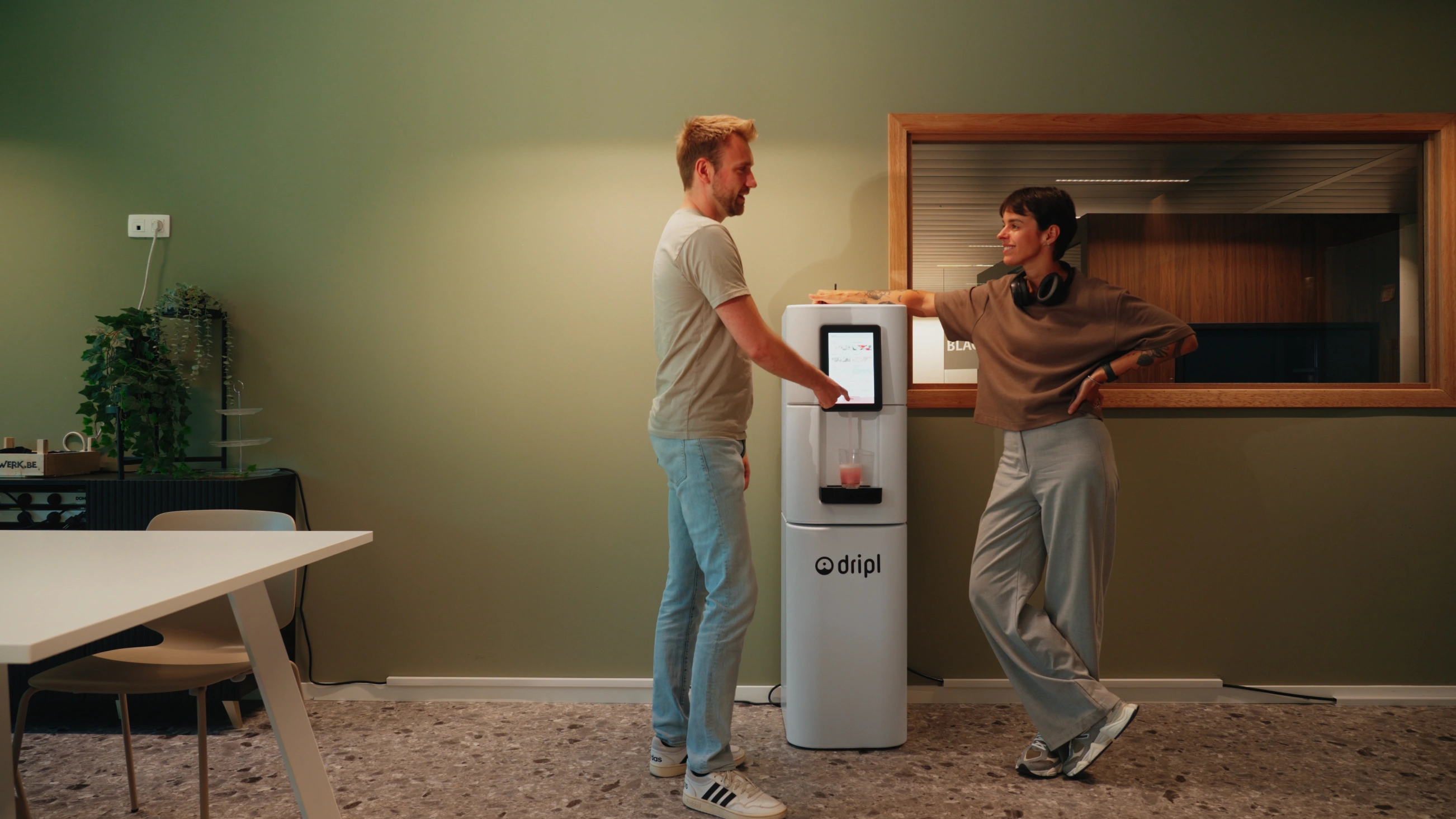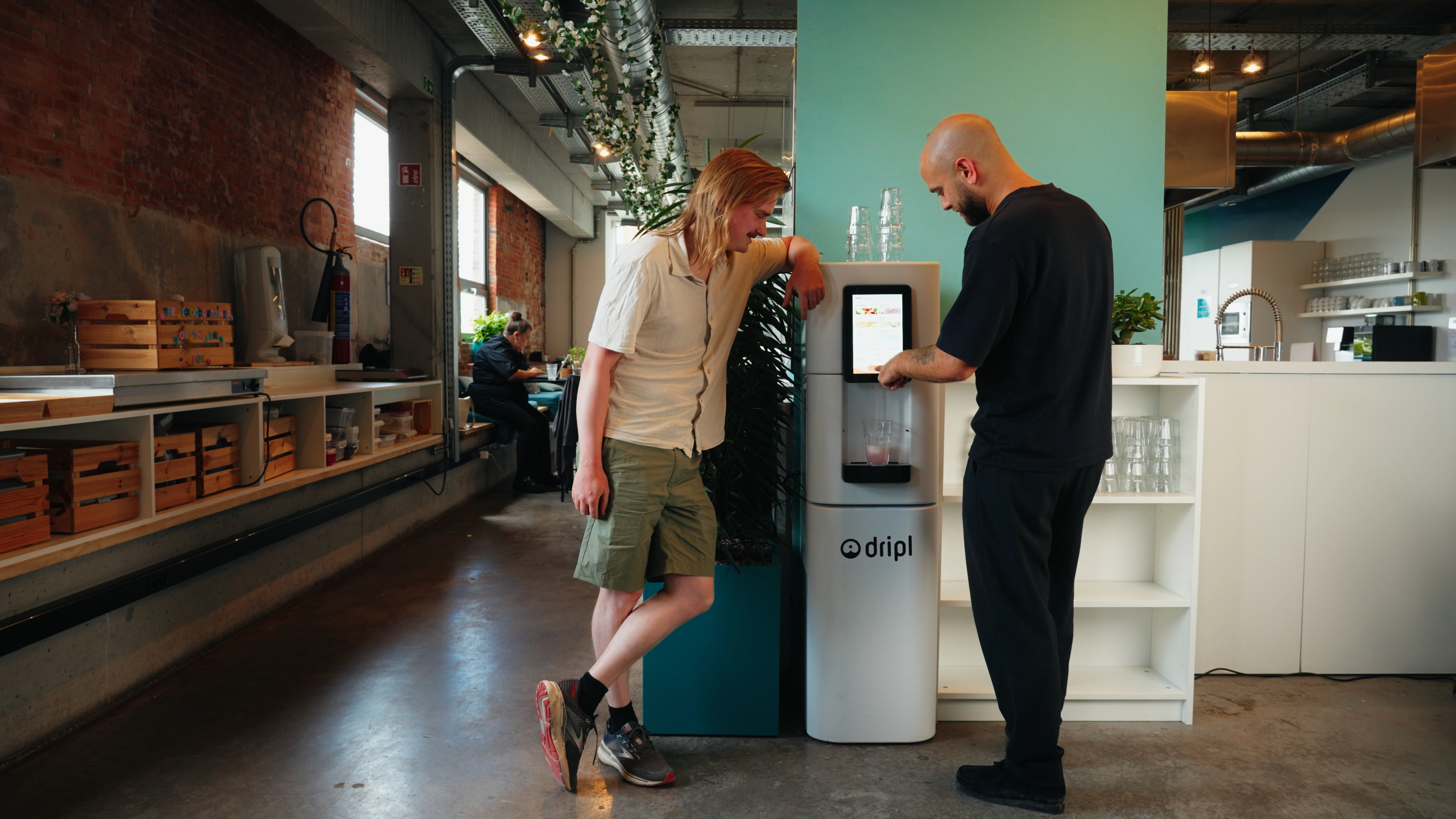All blog posts
The plastic surcharge in the office, this is what it means.
.jpg)
As of July 1, 2023, the plastic surcharge is a reality for any business that uses or offers packaged products in the office. From water bottles to individually wrapped snacks, now you are literally paying the price for disposable plastic. This environmental burden not only has financial implications, but also forces companies to think critically about their use of packaging and the sustainability of their workplace.
What is the plastic surcharge?
The plastic surcharge is an environmental tax on single-use packaging. It was introduced in the Netherlands and other European countries to encourage companies to use less single-use plastic.
This surcharge ranges from 25 cents for a cup to 50 cents for a container. The purpose of this surcharge is twofold: first, to discourage the use of disposable plastic and second, to cover the costs associated with cleaning up plastic waste and promoting more sustainable alternatives.
Why does the plastic surcharge exist in the office?
The workplace is one of the largest consumers of single-use plastic, often without a second thought. Think team meetings with bottled water, individually packaged snacks in vending machines, and meeting rooms full of soda cans.
Through this surcharge, the government wants to encourage behavioral change and push companies toward circular systems. And with good reason: according to the European Parliament, more than 60% of plastic in the European Union ends up in landfills every year.
Application to offices and company restaurants
The plastic surcharge is not limited to the hospitality industry, but also applies to office company restaurants. This means that offices that have a company restaurant can no longer offer their single-use containers free of charge to their employees. The surcharge must be listed separately on the receipt and paid separately by the consumer or employee.
To comply with the plastic surcharge, companies can take several measures:
- Offer reusable alternatives. Encourage the use of reusable cups, trays and cutlery in your company restaurant or coffee corner. This not only reduces the impact of the surcharge, but also the total amount of disposable plastic used. It might be a nice idea to give your employees a personalized reusable bottle as a gift with their name and your company's logo.
- Have your employees bring their own reusable bottle or coffee mug to the office.
- If this is not an option, you must list the surcharge separately on the receipt. Specific amounts can always be found on the website of the KVK, but here is already a guideline.
- €0.50 for food packaging
- €0.25 for cups
- €0.05 for pre-packaged vegetables
Exactly what type of packaging does this apply to?
First and foremost, it should be about packaging where the food is consumed without any further preparation. So this applies to meal salads, but not microwaveable meals. This also does not include bags and wrappers for sandwiches. When we look at beverage containers, we are talking about all the packaging you would use once. So your plastic-coated paper coffee cup is also included here.
Does it all still seem a bit complicated to you? We understand! Feel free to fill in the KvK's regulation aid, then you will know exactly what your situation falls under.
.jpg)
As of July 1, 2023, the plastic surcharge is a reality for any business that uses or offers packaged products in the office. From water bottles to individually wrapped snacks, now you are literally paying the price for disposable plastic. This environmental burden not only has financial implications, but also forces companies to think critically about their use of packaging and the sustainability of their workplace.
What is the plastic surcharge?
The plastic surcharge is an environmental tax on single-use packaging. It was introduced in the Netherlands and other European countries to encourage companies to use less single-use plastic.
This surcharge ranges from 25 cents for a cup to 50 cents for a container. The purpose of this surcharge is twofold: first, to discourage the use of disposable plastic and second, to cover the costs associated with cleaning up plastic waste and promoting more sustainable alternatives.
Why does the plastic surcharge exist in the office?
The workplace is one of the largest consumers of single-use plastic, often without a second thought. Think team meetings with bottled water, individually packaged snacks in vending machines, and meeting rooms full of soda cans.
Through this surcharge, the government wants to encourage behavioral change and push companies toward circular systems. And with good reason: according to the European Parliament, more than 60% of plastic in the European Union ends up in landfills every year.
Application to offices and company restaurants
The plastic surcharge is not limited to the hospitality industry, but also applies to office company restaurants. This means that offices that have a company restaurant can no longer offer their single-use containers free of charge to their employees. The surcharge must be listed separately on the receipt and paid separately by the consumer or employee.
To comply with the plastic surcharge, companies can take several measures:
- Offer reusable alternatives. Encourage the use of reusable cups, trays and cutlery in your company restaurant or coffee corner. This not only reduces the impact of the surcharge, but also the total amount of disposable plastic used. It might be a nice idea to give your employees a personalized reusable bottle as a gift with their name and your company's logo.
- Have your employees bring their own reusable bottle or coffee mug to the office.
- If this is not an option, you must list the surcharge separately on the receipt. Specific amounts can always be found on the website of the KVK, but here is already a guideline.
- €0.50 for food packaging
- €0.25 for cups
- €0.05 for pre-packaged vegetables
Exactly what type of packaging does this apply to?
First and foremost, it should be about packaging where the food is consumed without any further preparation. So this applies to meal salads, but not microwaveable meals. This also does not include bags and wrappers for sandwiches. When we look at beverage containers, we are talking about all the packaging you would use once. So your plastic-coated paper coffee cup is also included here.
Does it all still seem a bit complicated to you? We understand! Feel free to fill in the KvK's regulation aid, then you will know exactly what your situation falls under.
FAQs
Get your free quote
Get your personalised quote today. We’ll get back to you soon.




-min.png)